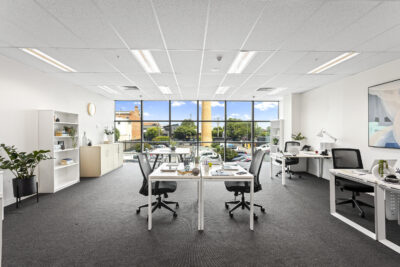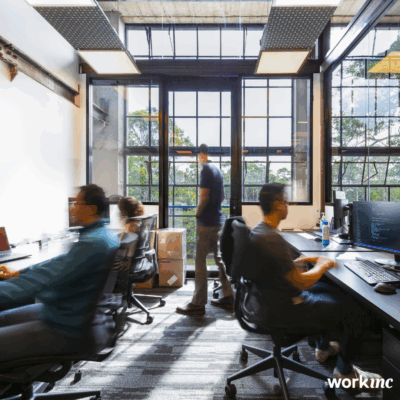Collaboration has become an essential component of a successful business, influencing productivity, innovation, and overall workplace culture. As organisations move beyond traditional office settings, the rise of collaborative workspaces is redefining how teams work together. These flexible workspaces provide an ideal environment where employees can develop ideas, share knowledge, and enhance teamwork in a way that a conventional private office often cannot.
By fostering interaction, creativity, and cross-pollination of ideas, these collaborative spaces have quickly become the preferred choice for startups and SMEs looking to build stronger, more dynamic teams. Whether it’s through breakout sessions, informal meetings, or structured group work, the ability to collaborate seamlessly is what sets these spaces apart.
In this guide, we will explore the meaning of collaborative workspaces, their many benefits, and how companies can implement the best workspace design to suit their business needs.
Understanding Collaborative Workspaces and Their Importance
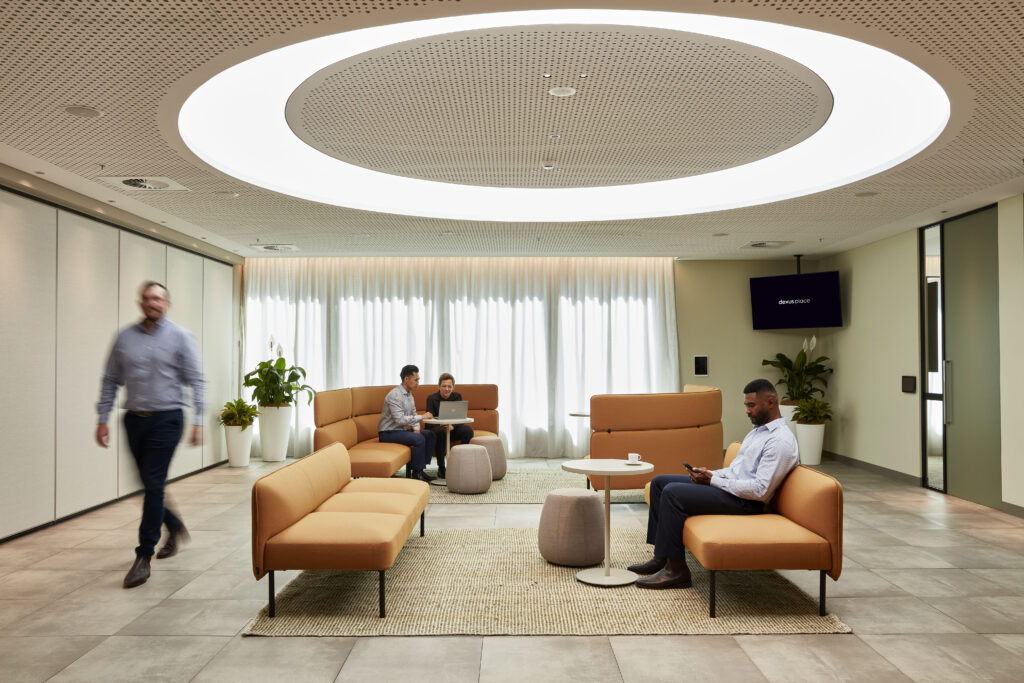
Image source: https://flexfind.com.au/listing/480-queen-street-brisbane/
A collaborative workspace is more than just an open office with multiple desks. It is a carefully curated work environment designed to bring people together, promote collective knowledge, and encourage social interaction. Unlike traditional cubicles, these spaces are built around flexibility and functionality, allowing teams to adapt to different work styles and business needs.
The design of a collaborative office space incorporates comfortable spaces, shared resources, and technology-driven solutions that support teamwork and communication. From meeting rooms and breakout areas to collaboration tables and open workspaces, every element plays a role in enabling collaboration.
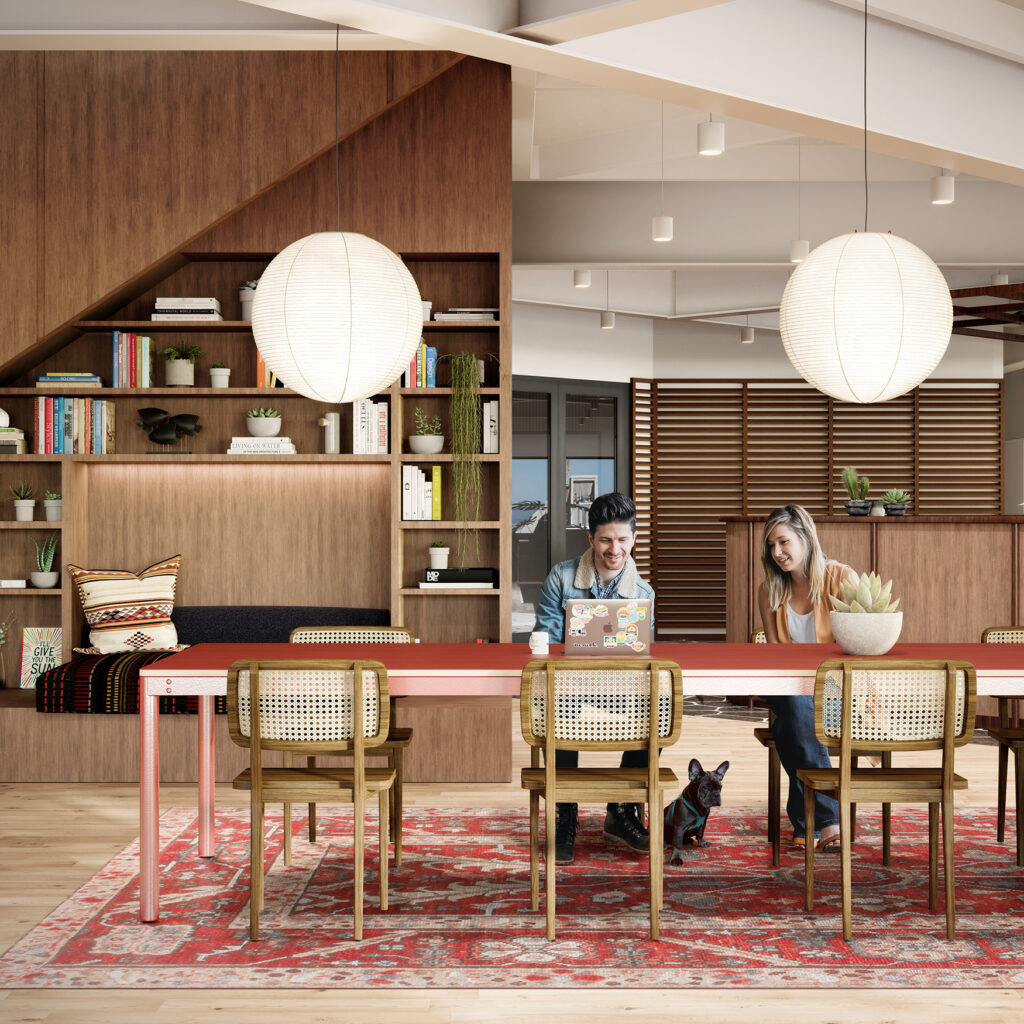
Image source: https://flexfind.com.au/listing/152-st-georges-terrace-perth/
Companies investing in collaborative workspace design understand that employee engagement and satisfaction are crucial for success. When employees have access to an efficient way of working that allows them to focus, collaborate, and share ideas freely, productivity naturally increases.
Key Benefits of Collaborative Workspaces
1. Increased Productivity Through Collaboration
One of the primary reasons businesses adopt collaborative spaces is to boost productivity. When teams are encouraged to communicate openly and share ideas effortlessly, tasks get completed faster and with greater efficiency. Collaboration tables, casual meetings, and informal brainstorming sessions contribute to a more engaged and motivated workforce.
In fact, research from Deloitte found that 60% of employees involved in collaborative work said it sparked innovation — and 73% said it also improved their performance. Organisations that truly seek out and value the input of their employees often gain access to insights that help them move forward in surprising and beneficial ways.
Unlike traditional office layouts that promote individual work, a collaborative workspace ensures that team members can work together without unnecessary barriers. This fosters a sense of community and teamwork, making problem-solving and decision-making much smoother.
2. Enhanced Innovation and Fresh Ideas
Innovation thrives in an environment where people can discuss new concepts freely. A well-designed collaborative office encourages cross-pollination of ideas by bringing together individuals from different departments. This not only leads to creative problem-solving but also introduces fresh perspectives that may not have been considered otherwise.
For example, a marketing team working alongside product designers in an open workspace can develop ideas faster and more efficiently than if they were isolated in separate offices. The result is a more agile and responsive workplace that continuously adapts to new challenges.
3. Cost-Effective and Efficient Use of Space
For many businesses, office space is one of the most significant expenses. Traditional office setups often leave larger spaces underutilised, whereas collaborative workspaces are designed to maximise efficiency. By incorporating shared spaces, dual-function areas, and flexible seating arrangements, businesses can significantly reduce overhead costs.
Additionally, collaborative workspace designs eliminate the need for multiple private offices, freeing up room for breakout areas, meeting rooms, and coworking spaces. This ensures that every part of the office is used effectively while providing employees with a variety of work environment choices to suit their tasks.
4. Improved Employee Satisfaction and Well-Being
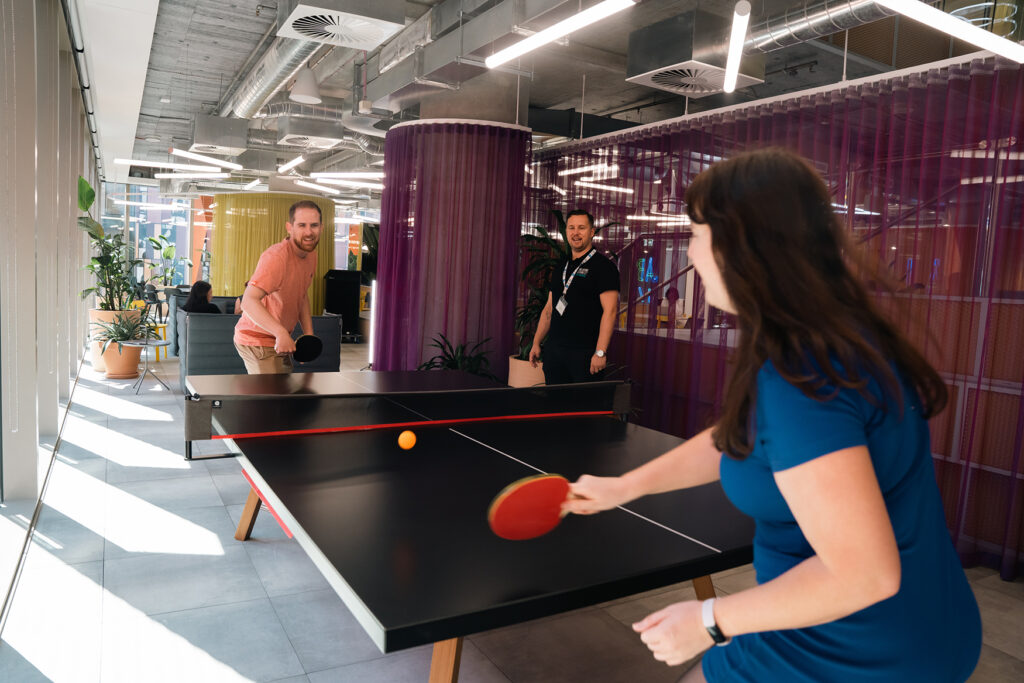
Image source: https://flexfind.com.au/listing/700-swanston-street-carlton/
An employee’s work environment directly impacts their engagement, satisfaction, and overall well-being. Collaborative workspaces are designed to foster a sense of belonging, helping employees feel more connected to their team and their work.
A well-thought-out office design incorporates natural lighting, ergonomic furniture, and comfortable breakout areas, creating an inviting atmosphere that makes employees want to come to work. This ultimately leads to lower stress levels, better employee retention, and a stronger company culture.
5. Better Adaptability to Different Work Styles
No two employees work the same way. While some prefer a quiet space to focus, others thrive in a social and interactive setting. A well-designed collaborative workspace caters to diverse needs by offering a combination of private offices, open workspaces, and communal areas.
This flexibility allows employees to choose their ideal working conditions, whether it’s collaborating on a project in a meeting room or completing deep work in a dedicated space. Providing a right mix of work environments ensures that all employees remain productive and engaged.
Essential Elements of a Successful Collaborative Workspace
1. Strategic Office Layouts That Encourage Interaction
A great collaborative workspace design starts with an efficient office layout. Open spaces that encourage group work and interaction, alongside quiet zones for focused work, create a balanced work environment that supports all work styles. Breakout areas and casual seating arrangements encourage spontaneous discussions, while dedicated meeting rooms provide space for structured conversations.
2. Smart Use of Technology for Seamless Collaboration
Technology plays a key role in modern collaborative workspaces. From video conferencing tools and cloud-based project management systems to interactive whiteboards and digital scheduling systems, integrating the right technology ensures that employees can collaborate efficiently regardless of location.
3. Comfortable and Functional Furniture
Investing in ergonomic office furniture is crucial for creating a productive and comfortable space. Adjustable desks, flexible seating, and collaboration tables support different work styles, ensuring that employees can work comfortably for long periods.
4. A Balance Between Open and Private Spaces
While open workspaces encourage collaboration, having private offices or quiet zones is just as important. Employees need space to concentrate when necessary, making it essential to include soundproof pods, focus rooms, or enclosed spaces within a collaborative office.
5. Community and Culture Building
Beyond physical design, a collaborative workspace should also promote a sense of community. Encouraging social interaction, informal meetings, and networking events helps build strong professional relationships. When employees feel connected to their colleagues, they are more likely to be engaged and invested in their work.
The Future of Collaborative Workspaces
The rise of collaborative workspaces signals a shift in how businesses view productivity and workplace dynamics. Companies are moving away from rigid office structures in favour of agile, flexible workspaces that adapt to their employees’ evolving needs.
Cities like Brisbane, Adelaide, Melbourne, Sydney, and Perth are already seeing a surge in demand for collaborative office spaces that combine modern design with technology-driven solutions. Businesses that embrace these trends will not only enhance teamwork and efficiency but also stay ahead in an increasingly competitive market.
